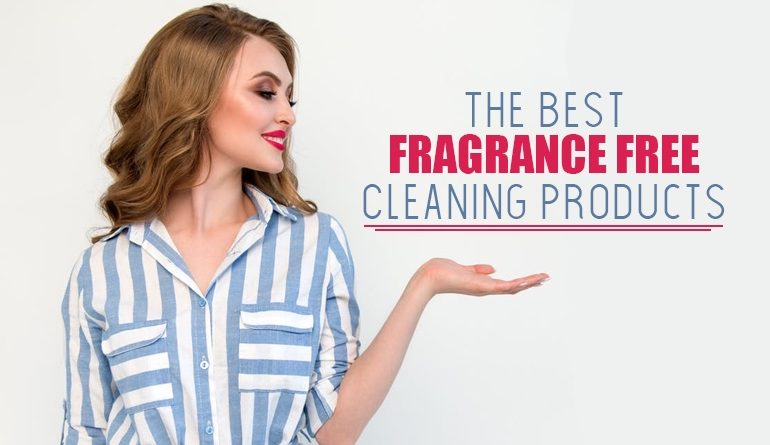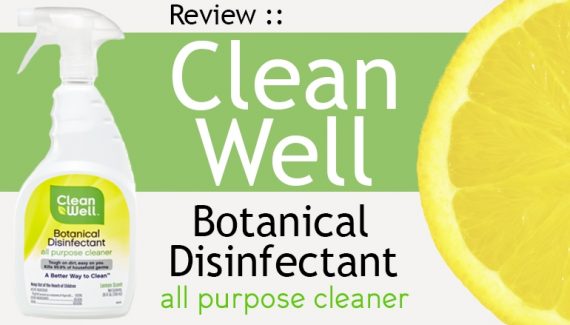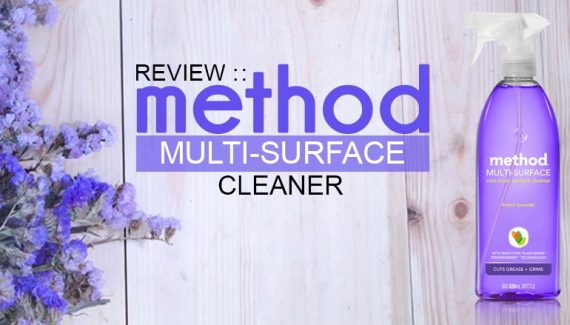Safe Household Cleaning is reader-supported. All reviews are independent and any products reviewed are purchased by the site owner. To help fund this model, some of the links on the site are affiliate links. If you decide to make a purchase from one of these links, this site will receive some commission. At no cost to you. It helps keeps this place running. Learn more
Air fresheners, diffusers, and candles transform our homes with smells ranging from cinnamon to cedarwood. It is not always clear from ingredient labels, but fragrances are also found in nearly all consumer products (e.g. bleaches, detergents, shampoos). On average, fragranced products release 17 ‘volatile compounds’ into their surroundings [1].
In the past decade, increasing evidence has been published into the identification, prevalence, and risks of fragrances. Scientific and public concern has even led to the introduction of ‘fragrance-free’ workplace policies [2]. Are the risks overblown, or should we be more cautious routinely polluting our homes (even with pleasant smells)?
Why are fragrances added to cleaning products?
Fragrances are added to cleaning products to improve their smell. This is done through two similar, but very subtly different methods. The first is to use synthetic fragrances such as ‘galaxolide’ (a distinctive floral, woody smell). These strong smells clearly and intentionally fragrance a product (e.g. cleaning products marketed as ‘floral’).
The second is to use ‘masking’ fragrances [3]. Many chemicals in cleaning products are intrinsically unpleasant (e.g. ‘rotten eggs’ associated with sulfur surfactants). Cleaning products marketed as ‘fragrance-free’ often use lower concentrations of ‘natural’ essential oils to mask chemical ingredients, creating a neutral product.
Note: A masking fragrance is still a fragrance. The practice is permitted through the complex technicalities of consumer labelling regulations – discussed in more depth below.
Are there different types of fragrance?
There are many ways to classify fragrances, but this is commonly achieved through their smell or origin (e.g. botanical or synthetic). Colors can be separated into a wheel, and the same applies for fragrances. Slightly less intuitive, but four distinct groups can be combined to create any smell (although the practice is generally left to skilled ‘perfumers’) [4]:
• Floral (soft floral, floral oriental)
• Oriental (soft oriental, woody oriental)
• Woody (mossy woods, dry woods, aromatic)
• Fresh (citrus, fruity, green, water)
The other common method of classifying fragrances is by how they are produced. There are over 2,500 unique fragrances, with common examples in the table below [5]. Many fragrances can be produced naturally or synthetically (e.g. limonene).
| Botanical Fragrances |
Synthetic Fragrances |
| Cedar
Citron Citronella Spearmint Wintergreen |
Esters (e.g. geranyl acetate = rose)
Terpenes (e.g. limonene= lemon) Aromatic (e.g. vanillin = vanilla) Aldehydes (e.g. hexanal = grass) Lactones (e.g. gamma-decalactone = peach) |
What are the risks of fragrances in cleaning products?
Fragrances are chosen because they have strong smells. This means only low fragrance concentrations are needed to alter the smell of a product, typically accounting for less than 0.3% of a cleaning product (or up to 3% of fabric softeners) [6]. This helps to reduce the risk of harmful effects, but fragrances are still associated with [7]:
- Asthma and exacerbations
- Chest tightness and wheezing
- Infant diarrhea and vomiting
- Headaches
- Irritant or contact dermatitis
- Mucosal irritation
These effects can be severe and are more frequently reported by those with allergic conditions, such as asthma and hypersensitivities to other ingredients. It has been reported that up to 10% of the US population has experienced irritation with fragranced products [8].
How do I know what Fragrances are in a cleaning product
There are many reasons consumers should be told which ingredients are in products they buy (e.g. transparency, environmental, medical, personal beliefs). This seems obvious given adverse effects experienced at even low concentrations. Despite this, it is more common to see ‘fragrances’ on a label than the specifics. Labelling legislation helps to explain why.
1. United States
In the US, fragrances in household products (e.g. detergents, fabric softeners, air fresheners) are regulated by the ‘Consumer Product Safety Commission’ [9]. The ‘Fair Packaging and Labeling Act’ prevents the disclosure of ‘trade secrets’. This includes fragrances, as they can be complex blends. Instead, manufacturers must consider:
‘The ingredient or mixture of ingredients acting as a masking agent…may be declared by their individual name(s) or as “fragrance”. A masking agent present in a product at an insignificant level may be considered an incidental ingredient under in which case it need not be declared on the label.’ 21 CFR 701.3(a) (www.ecfr.gov)
In addition, the ‘Federal Hazardous Substances Act’ considers final products and not individual ingredients (with many, many exceptions). For cleaning products, general warnings such as ‘irritant’ or ‘flammable’ appear on labels, but not the health risks of individual ingredients (e.g. contact dermatitis with fragrances). This leaves responsible manufacturers or trial-and-error as the only way to avoid harmful ingredients.
2. European Union
For over 20 years the EU has reviewed evidence for fragrances that are likely to cause allergic conditions (e.g. contact dermatitis), and specifically identified 26 of those most harmful. There was no legislation forcing manufacturers to formally list these on labels, until the introduction of ‘EC No.1223/2009’ in November 2009 [10].
As of 2018, the list has expanded to 256 ingredients (including fragrances, dyes, etc.) that must be explicitly stated on ingredient labels at any concentration. This list includes both synthetic and botanical ingredients, recognizing that ‘natural’ fragrances can be harmful. The regulations specify that manufacturers must make detailed datasheets available on medical request, although bound by confidentiality, preventing wider publication.
Note: Legislation varies considerably by country and region. Global legislation is generally more closely aligned to the EU than US (e.g. Australia, New Zealand, Argentina).
Summary
Our homes are filled with fragrances. These are added to cleaning products to mask the smell of other chemicals (e.g. surfactants) but are associated with a range of health effects. Research is ongoing to determine the risk, but fragrances have been associated with both severe respiratory (e.g. asthma exacerbations) and dermatological (e.g. dermatitis) effects.
Labeling regulations vary, but in the EU manufacturers must explicitly state fragrances known to be harmful on ingredient labels – this is not the case in the US. There is no universal way to avoid fragrances (‘masking fragrances’ can be found when ‘fragrance-free’). Trusted reviews and transparent manufacturers are among the only reliable methods to avoid specific fragrances.
References
[1] Steinemann, A. C., MacGregor, I. C., Gordon, S. M., Gallagher, L. G., Davis, A. L., Ribeiro, D. S., & Wallace, L. A. (2011). Fragranced consumer products: chemicals emitted, ingredients unlisted. Environmental Impact Assessment Review, 31(3), 328-333.
[2] De Vader, C. L., & Barker, P. (2009). Fragrance in the workplace is the new second-hand smoke. ASBBS, 16(1), 1-11.
[3] Hamilton, T., & de Gannes, G. C. (2011). Allergic contact dermatitis to preservatives and fragrances in cosmetics. Dermatitis, 14, 16.
[4] Donna, L. (2009). Fragrance perception: Is everything relative. Perfumer & Flavorist, 34(12), 26-35.
[5] Sell, C. (2006). The chemistry of fragrances: from perfumer to consumer (Vol. 38). Royal Society of Chemistry.
[6] Basketter, D. A., Lemoine, S., & McFadden, J. P. (2015). Skin sensitization to fragrance ingredients: is there a role for household cleaning/maintenance products? European Journal of Dermatology, 25(1), 7-13.
[7] Dodson, R. E., Nishioka, M., Standley, L. J., Perovich, L. J., Brody, J. G., & Rudel, R. A. (2012). Endocrine disruptors and asthma-associated chemicals in consumer products. Environmental Health Perspectives, 120(7), 935-943.
[8] Caress, S. M., & Steinemann, A. C. (2009). Prevalence of fragrance sensitivity in the American population. Journal of Environmental Health, 71(7), 46-50.
[9] U.S. Food and Drug Administration (FDA). 2018. ‘Fragrances in Cosmetics’ [Internet]. www.fda.gov
[10] Yazar, K., Johnsson, S., Lind, M. L., Boman, A., & Liden, C. (2011). Preservatives and fragrances in selected consumer‐available cosmetics and detergents. Contact Dermatitis, 64(5), 265-272.



No Responses Yet